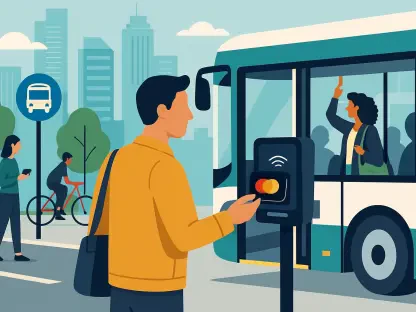Policymakers in Kuala Lumpur moved a step closer to outlawing social media accounts for users under 16, a pivot that would force global platforms to verify ages at scale while inviting a broader reckoning over where teens gather online and who bears liability when harm occurs, and even backers concede that the central bet is not only whether stricter gates can keep younger teens out but whether those barriers will nudge behavior toward safer spaces rather than more opaque corners that make oversight and support harder. The plan also suggests a shift in regulatory posture: instead of urging tools and guidance, the state would set a hard threshold and expect companies to reengineer onboarding, features, and safeguards for a specific market, with audits and penalties on the table if outcomes fall short.
What Malaysia Is Proposing
The policy sets a legal age floor that blocks new accounts for anyone under 16 and empowers regulators to require stricter controls on accounts that appear to belong to younger teens. Major networks—Facebook, Instagram, TikTok, YouTube, and X—would be expected to deploy verification steps for Malaysian users, not just at sign-up but throughout the user lifecycle as signals change. Oversight would likely sit with the Malaysian Communications and Multimedia Commission, which could issue guidance, demand documentation, and order remedial measures when systems fail. Early drafts leave room for limited exceptions, but none are guaranteed until the implementing rules are finalized.
Operationally, the mandate goes beyond a simple checkbox and contemplates ongoing compliance. Platforms could be told to reassess suspicious accounts, disable features that invite workarounds, and provide dedicated dispute channels for those wrongly flagged as underage. The legal definitions matter: which services qualify as social media, how mixed-use products like video or chat apps are treated, and whether read-only or supervised modes are permissible under strict conditions. Each answer shapes engineering choices, support staffing, and user communications. The result is a complex balancing act between robust enforcement and a user experience that remains accessible to legitimate audiences.
Why Lawmakers Want A Ban And How Age Checks Might Work
Supporters of the ban point to mounting research and public-health warnings that heavy teen exposure to algorithmic feeds, harassment, and addictive design is correlated with anxiety, depression, sleep disruption, and developmental risks. With roughly a third of internet users being children and teens spending hours on social apps daily, officials argue that parental controls, reporting tools, and content moderation have not curbed exposure sufficiently. The appeal of a bright line is clarity: it reduces ambiguity for families and schools while signaling that high-engagement environments were not designed for younger teens. Critics caution that blunt instruments can backfire, but even they acknowledge that the status quo leaves too many gaps.
Effectiveness hinges on “age assurance” that is accurate, inclusive, and privacy-preserving. Government ID checks deliver high confidence but raise concerns about data handling and exclude users without documentation. Mobile carrier signals and payment tokens offer lighter-touch routes with uneven coverage. Facial age estimation provides speed and avoids storing IDs, yet requires rigorous bias testing, independent audits, and limited retention. Malaysia’s mature eKYC ecosystem could enable privacy-respecting verification through trusted attestations rather than raw document storage, echoing frameworks championed by the U.K.’s ICO and Ofcom. The practical test is whether platforms can combine several signals to minimize false positives, limit friction, and keep sensitive data ephemeral.
Platform Realities, Family Behavior, And The Global Trendline
For platforms, localized compliance will demand custom age-gating flows, stronger parental consent paths if supervised experiences are allowed, and durable appeal processes for misclassification. Integrity teams will need to detect fake birthdays, account hopping, and cross-border sign-ups, while product teams pare back features that enable circumvention. Data governance becomes central: verification signals must be cryptographically secure, retention minimal, and practices transparently disclosed. The operational load also grows, with audits, regulator check-ins, and rapid remediation forming part of routine operations. Engineering for region-specific policies without fragmenting global codebases will challenge release cycles and quality assurance.
Families may feel real effects. If mainstream accounts become harder to obtain, some teens will drift toward private messaging, gaming chat, or niche apps where safety features are weaker and oversight is tricky. That possibility strengthens the case for sustained digital literacy in schools and homes, so young people learn to navigate manipulation, bullying, and misinformation wherever they encounter it. Globally, the policy aligns with a tightening trend: Australia has moved toward automatic shutdowns for under-16 accounts, the U.K.’s Online Safety Act compels blocking kids from high-risk content, and more than 20 U.S. states now require age verification, with some pushing checks at the app-store layer. The center of gravity has shifted from advisories to enforceable thresholds with penalties.
The decisive factors were likely to include clear scope, coherent definitions of “social media,” workable exceptions for education or read-only use, and verification methods that achieved high assurance without intrusive data collection. Platforms that built interoperable age assurance, low-friction appeals, and fraud detection while minimizing false positives positioned themselves to comply without alienating legitimate users. Regulators that paired enforcement with guidance, measurement, and independent audits created conditions for iterative improvement rather than whack-a-mole. Most importantly, policymakers that coupled access limits with digital literacy, school partnerships, and support channels for families improved outcomes beyond the main feeds and reduced displacement into riskier spaces.









